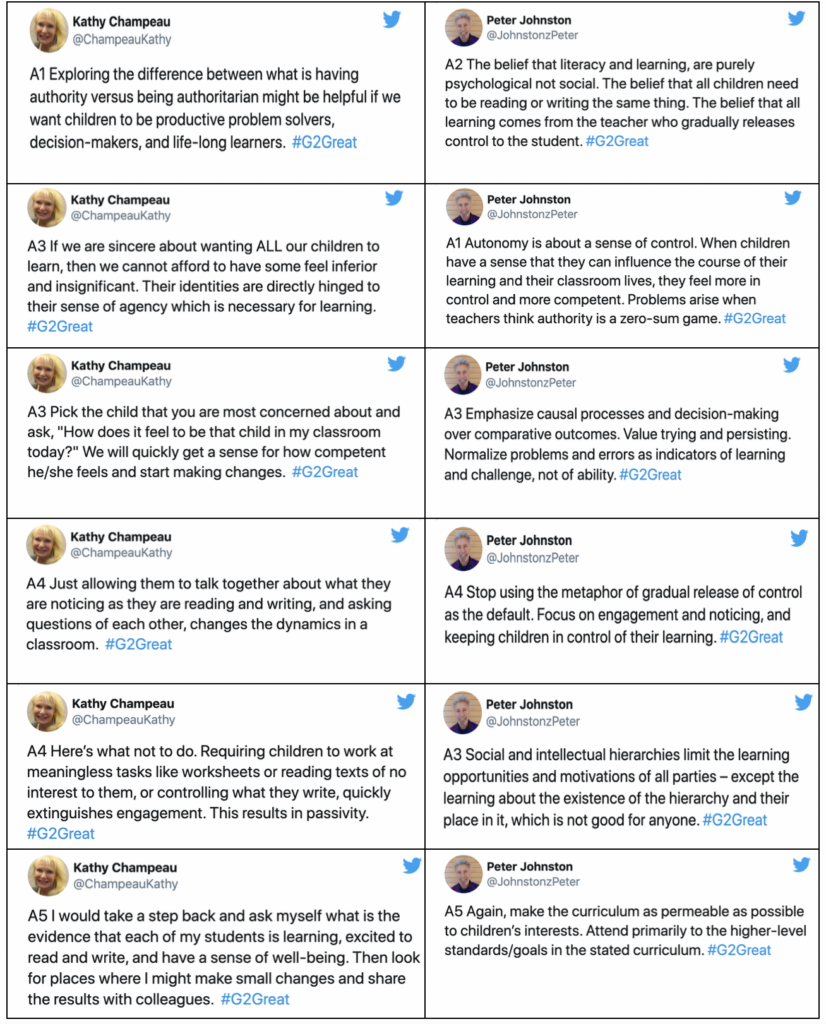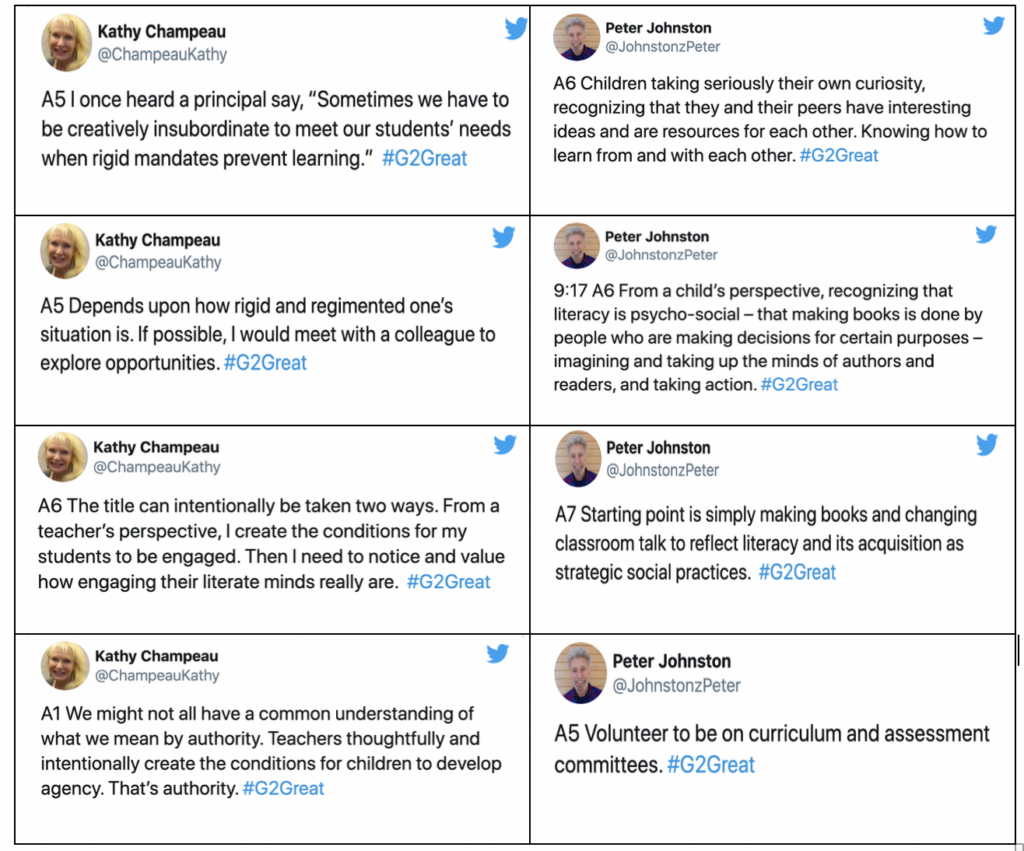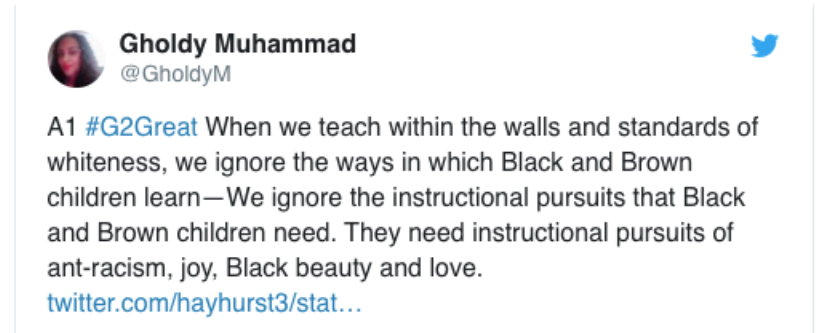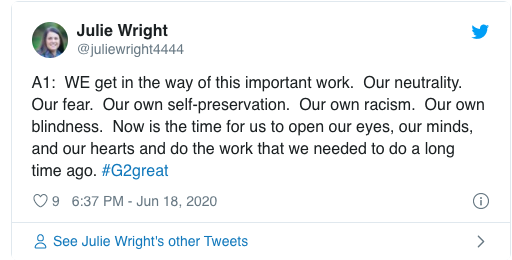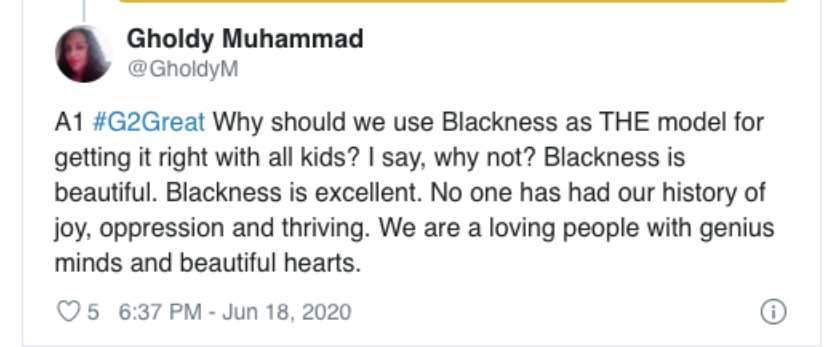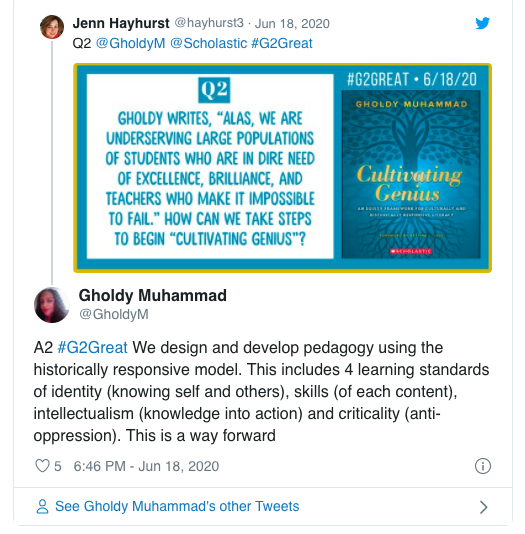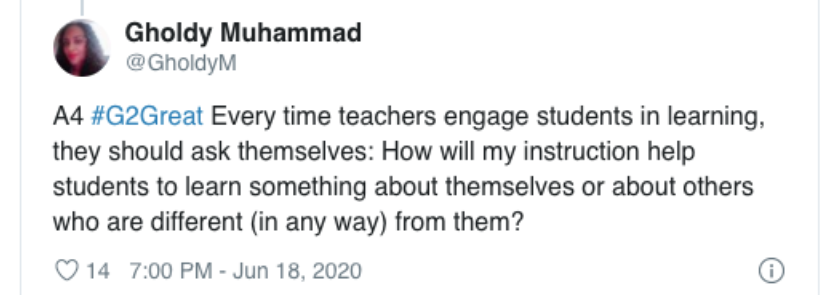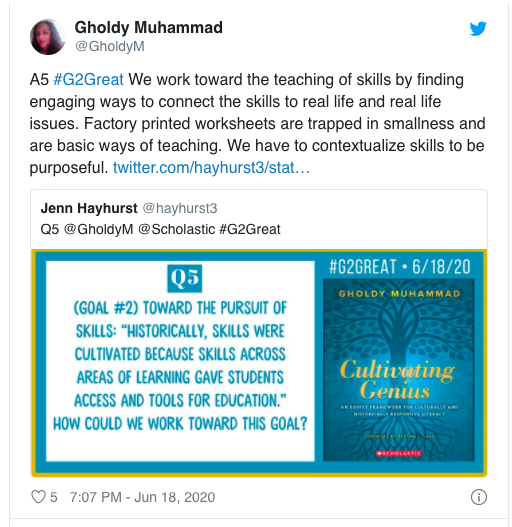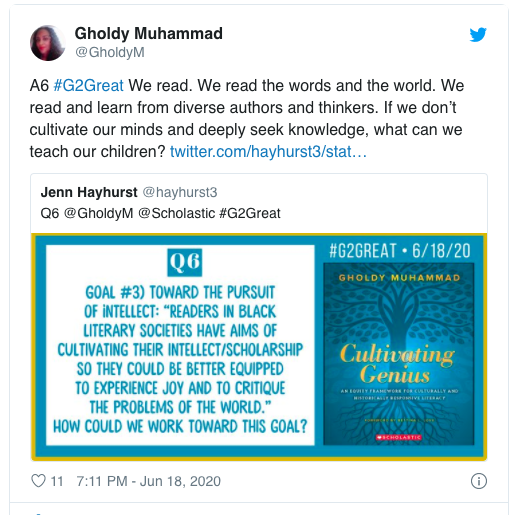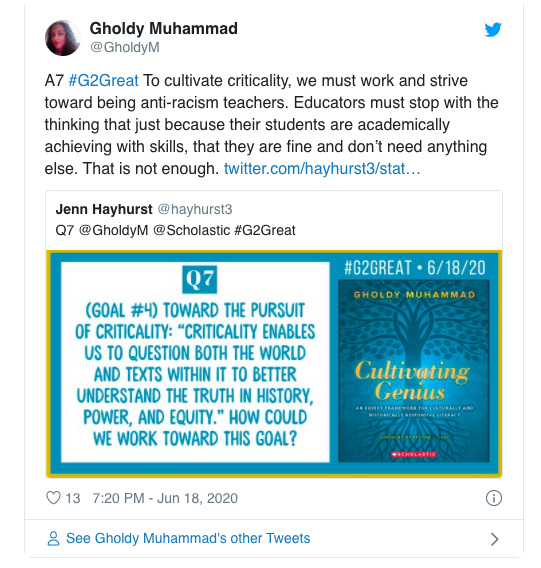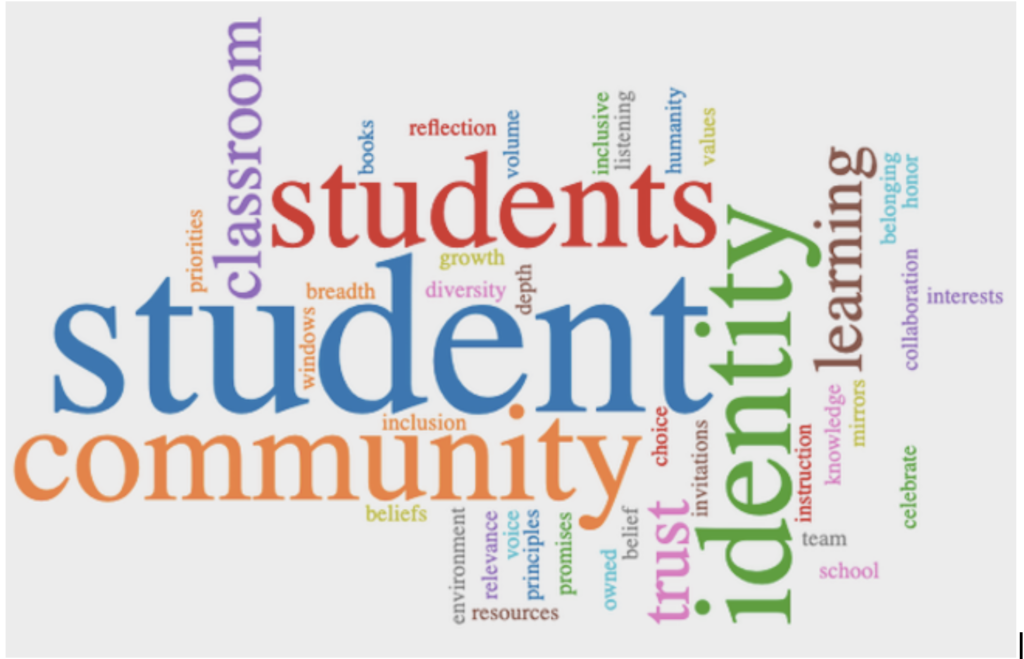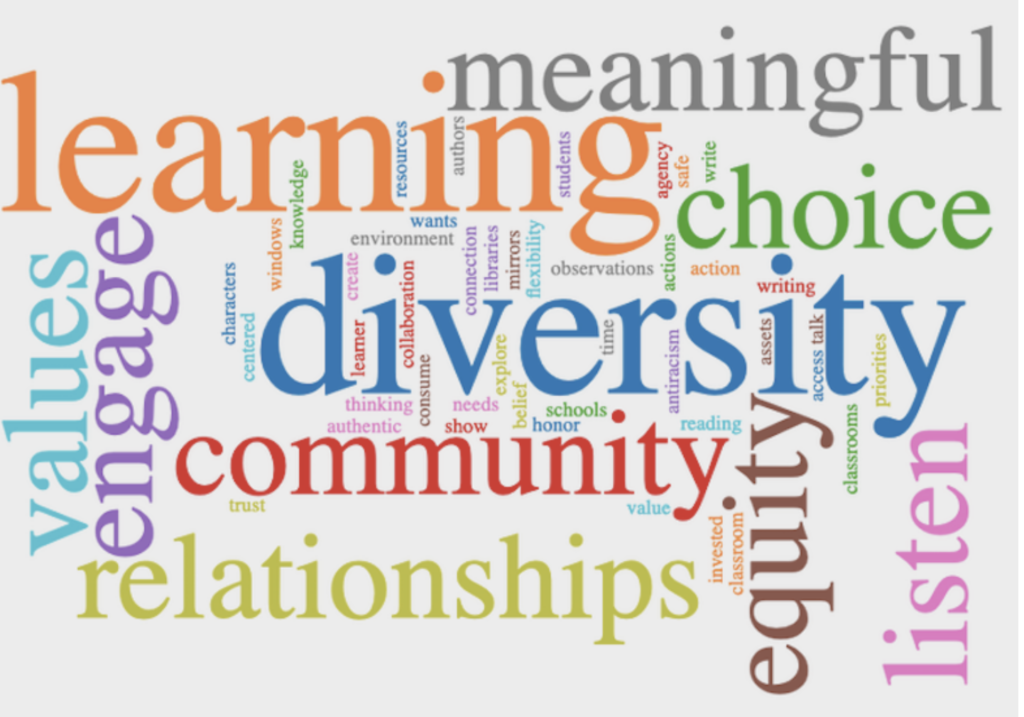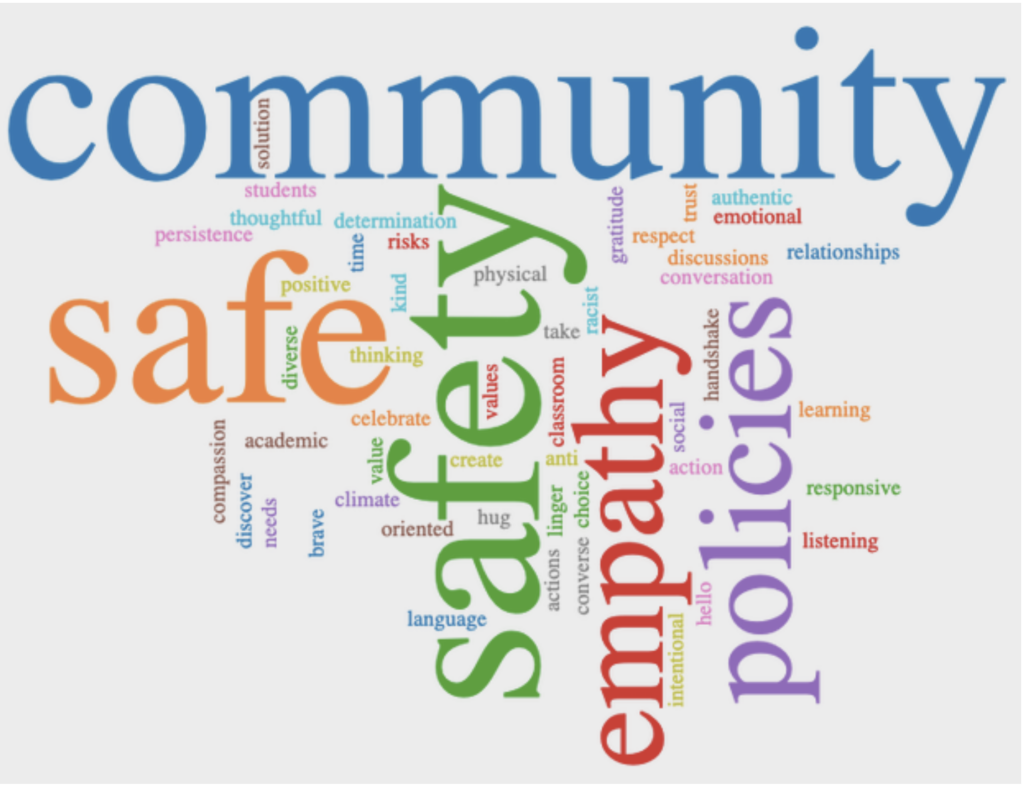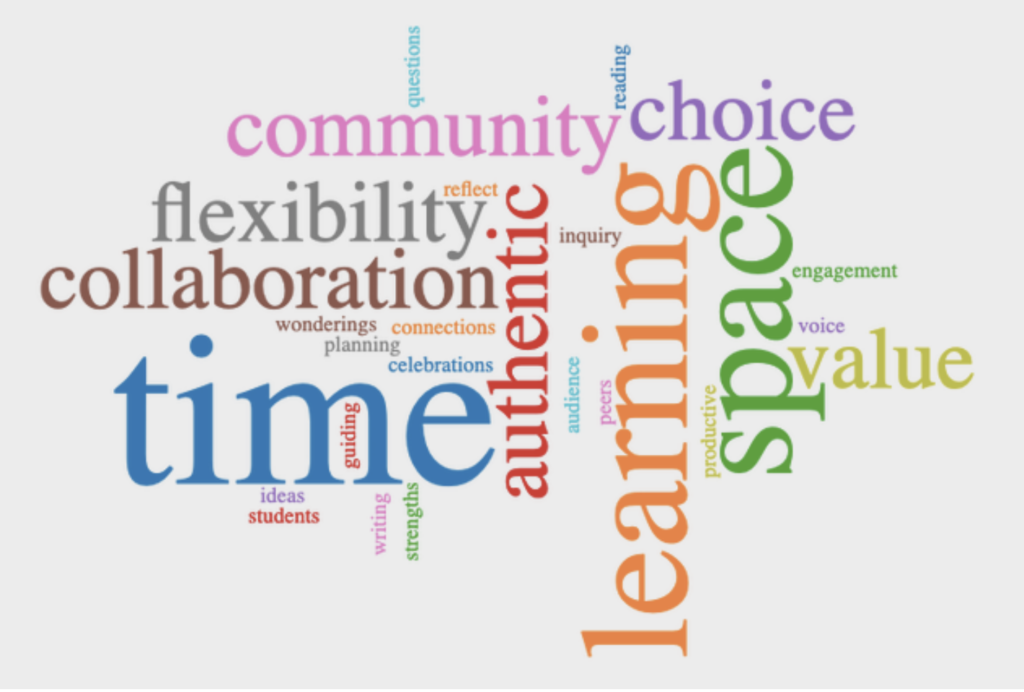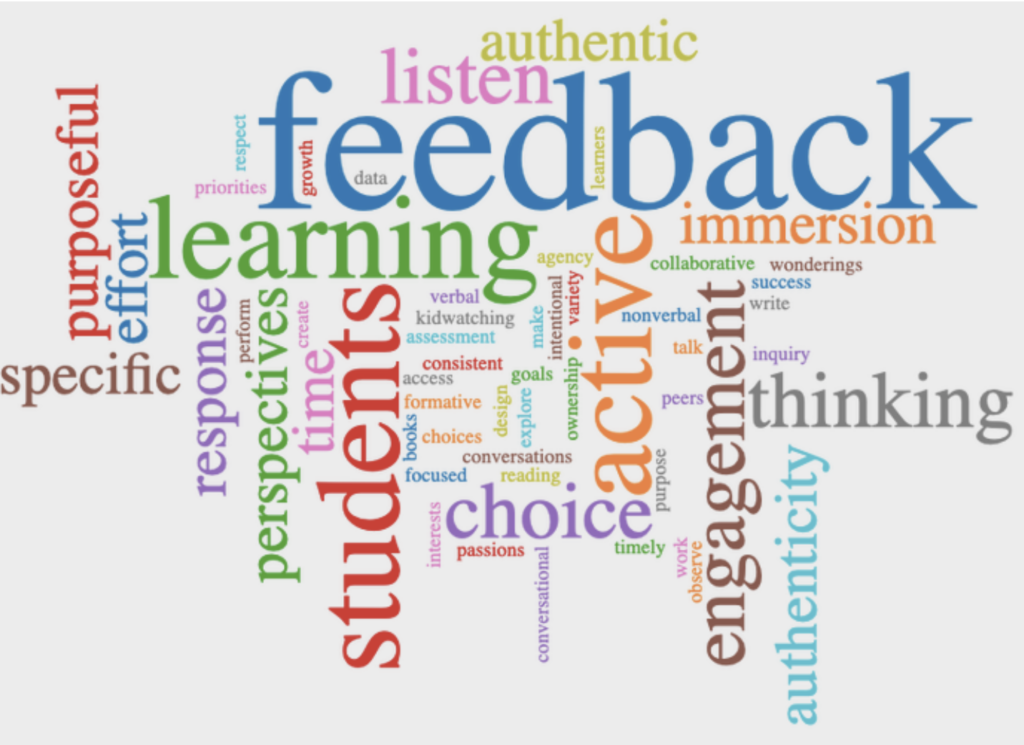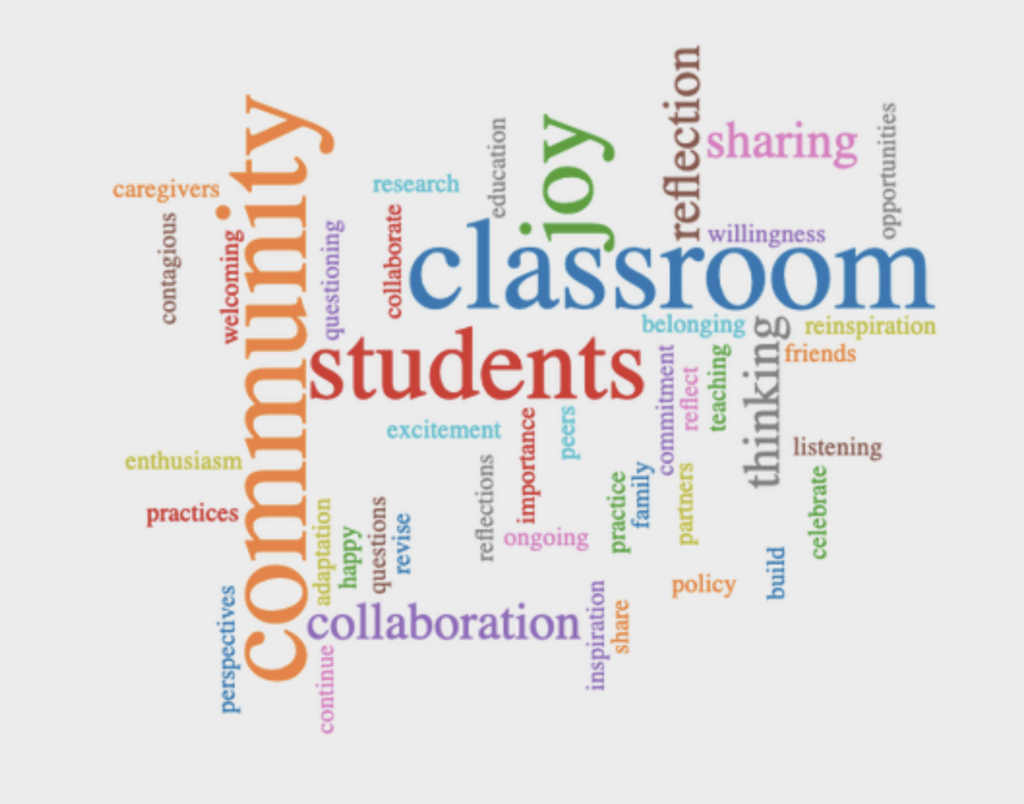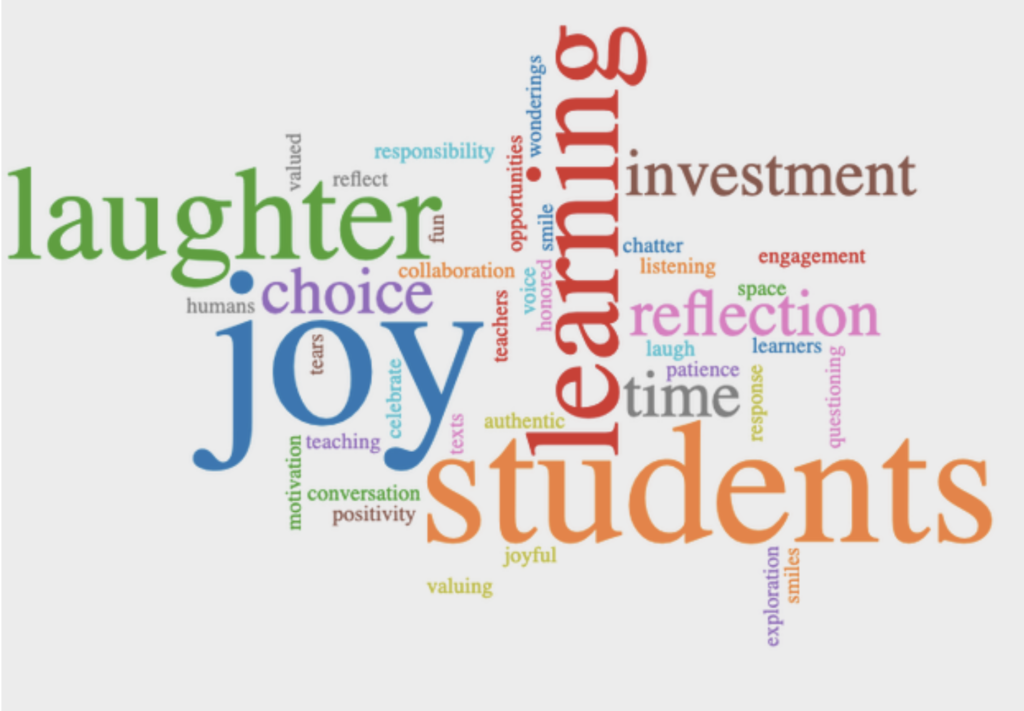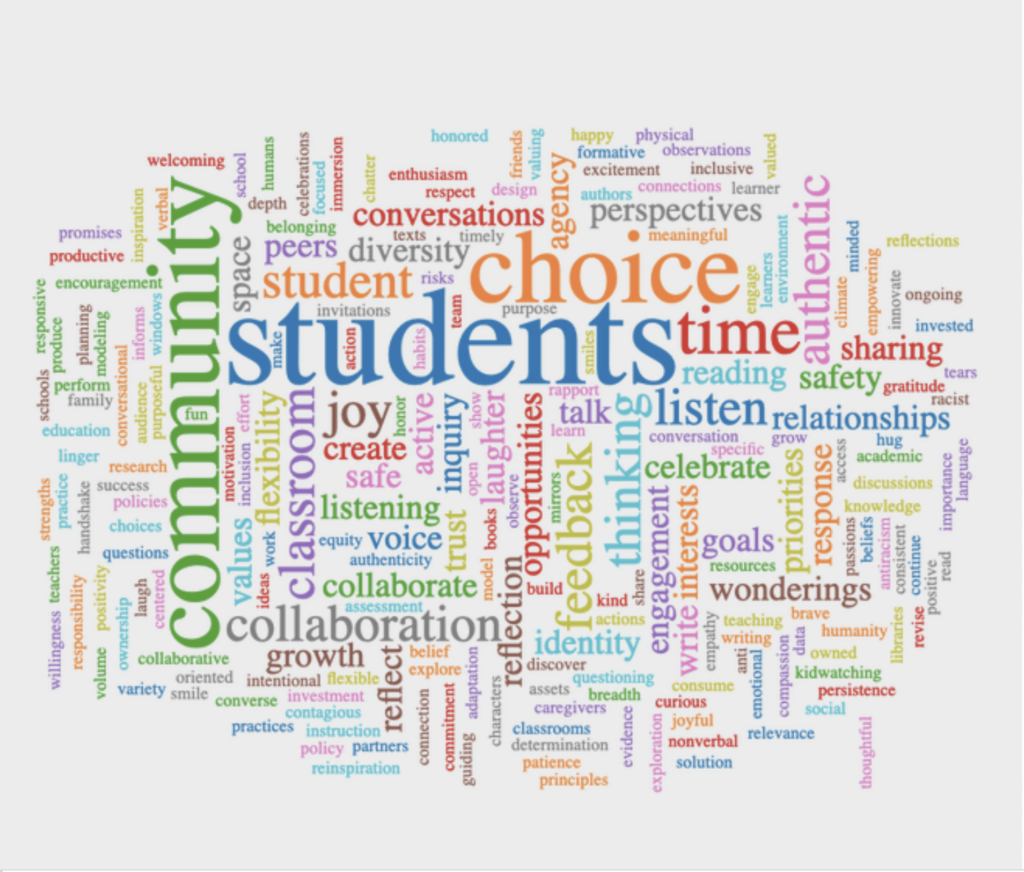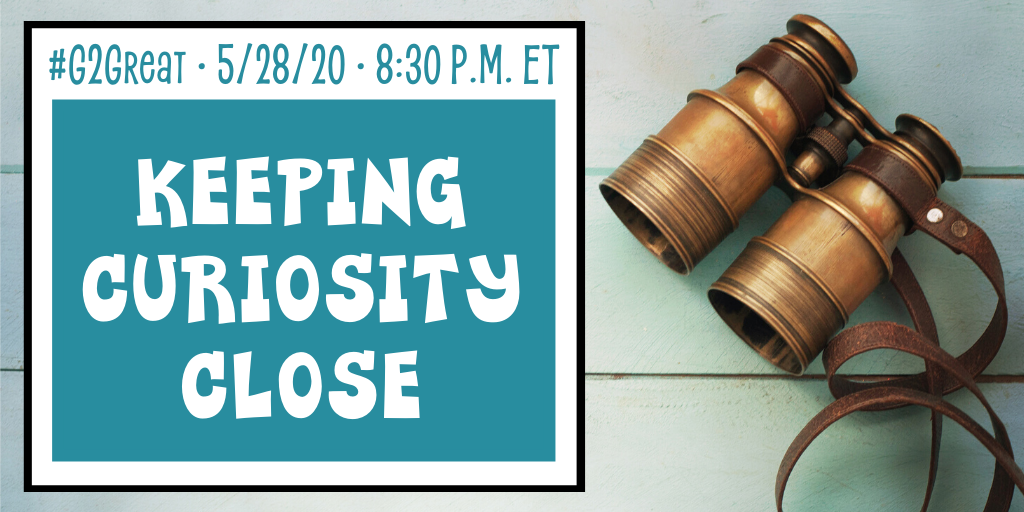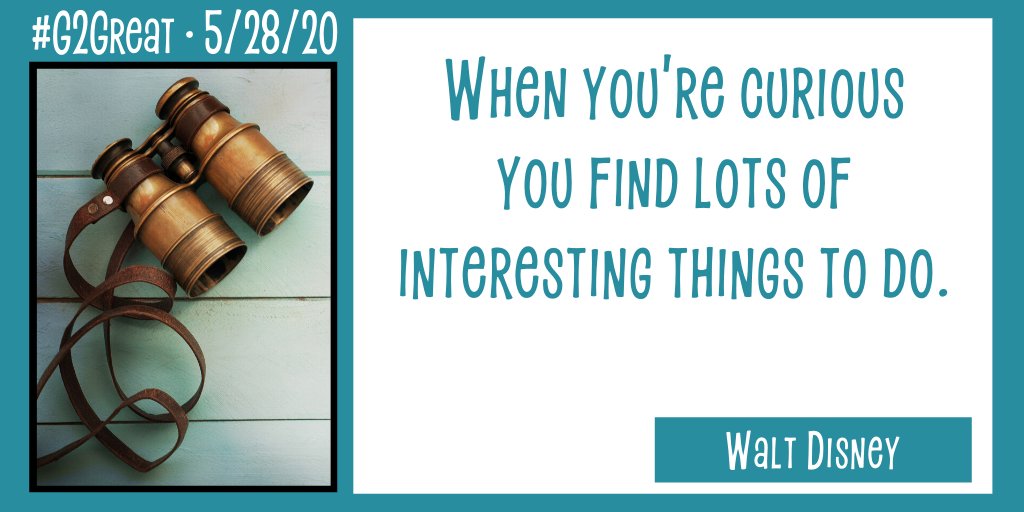by Mary Howard

June 25, 2020 was a very special day for our #G2Great family. It felt like a double dose of professional joy to welcome guest hosts, Peter Johnston and Kathy Champeau, and celebrate their phenomenal new book, Engaging Literate Minds: Developing Children’s Social, Emotional, and Intellectual Lives (Stenhouse 2020).
As soon as I heard that Engaging Literate Minds would soon be gracing the world, I knew that it was destined to be the professional gift that educators desperately needed. As I soaked in their wisdom, I was struck by the idea that I was indeed the recipient of this “gift” in every sense of the word. While their writerly “WHY” remained in clear focus as I read, it seems appropriate to begin by sharing the first question we posed to Peter and Kathy so that we can understand the book “WHY” from their perspective:
What motivated you to write this book? What impact did you hope that it would have in the professional world?
Peter Johnston
I was motivated to write this book because I thought what my co-authors were doing was so important that other teachers should be made aware of it and why it is so important. For myself, I hoped that the process of writing – shuttling between classroom and research library – would expand my understanding of literacy teaching and learning. Events happen in the classroom that we might recognize as important without initially knowing why, and there is often research that can help us understand. At the same time research can help us expand the frequency of those classroom moments and maximize their value, or find new aspects of development to move our teaching forward. My hope for the book in the professional world is that it will provoke teachers to do exactly what our group has done, helping each other to examine children’s learning and our teaching, keeping in mind the big picture of children’s development and how it might be reflected in the small moments of classroom life. I hope the book expands teachers’ imagination of what’s possible, why it’s important, and how to achieve it and, in the process, expand their professional knowledge. I also hope the book might affirm and perhaps enhance teachers’ understanding of the importance of teaching, both for children and for society at large.
Kathy Champeau
I wanted teachers and students to experience the thrill of it all, the thrill of teaching and learning this way, and what’s possible when they do. Teaching is such a daily joy when students want to come to school, when they can’t wait to find out what they are capable of, and when they realize who they are becoming in the process. Teachers create the opportunities for this to happen. I interact with a lot of teachers from a variety of districts and I was concerned that so many were leaving the profession or contemplating it because the joy was gone and they weren’t able to reach students the way they had hoped. I wondered if educators found examples that described what’s possible from multiple teachers, not just one teacher, then they might say, “I want that, I can do that.” No matter their setting, teachers are in control of their intellectual lives and who they become as teachers is a result of that. Teachers need to know their expertise matters and growing that expertise collaboratively in a true intellectual community can support their learning and, in turn, their students’ learning. If teachers create intellectually stimulating classroom environments that are safe for all students, school becomes an exciting place to be each day. Hopefully, this book is a vision for what’s possible and the reasons why this vision matters.
I believe without question that every educator who reads Engaging Literate Minds will understand this ‘vision of possible’, particularly if it is used to promote schoolwide collaborative study as I hope it will. Initially, knowing that nothing short of a full committed read would be adequate to bring their vision to life caused me to struggle finding a sense of direction for this post. Ultimately, I decided to focus on three sources of wisdom by using two quotes from Engaging Literate Minds as bookends to open and close this post followed by more reflections from Peter and Kathy with twitter-fueled chat messages lovingly sandwiched in the middle.
And so, I begin on page 9 of Engaging Literate Minds with our opening bookend quote since it reflects the spirit of the thinking that follows:
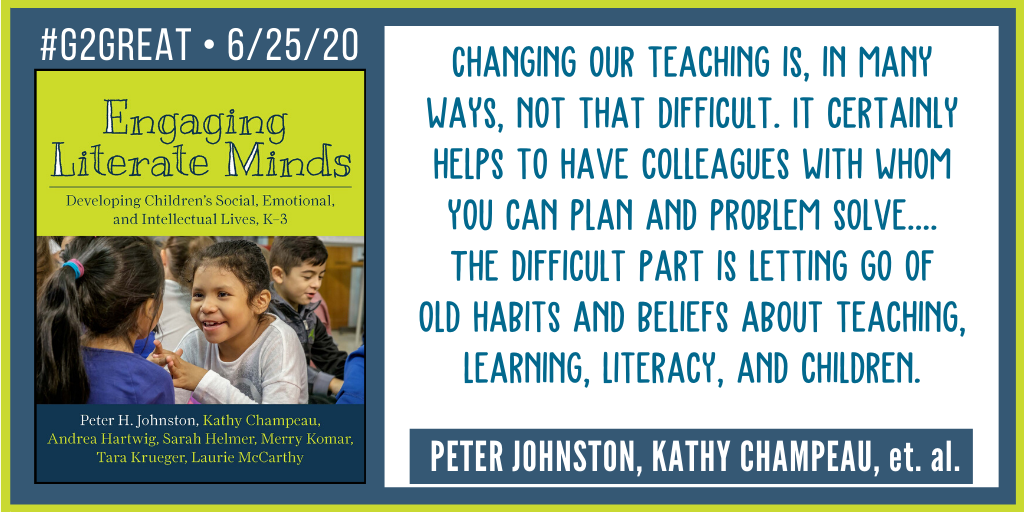
This quote is a stark reminder that professional books should “change our teaching” and thus transform our practices. I view this from a lens of HOPE. Across Engaging Literate Minds, Peter Johnston and Kathy Champeau, along with classroom vignettes from generous educators Andrea Hartwig, Sarah Helmer, Merry Komar, Tara Krueger and Laurie McCarthy, SHOW us what change looks like in action. This is the very heart and soul of a book that feels like an invitation to embrace transformative change both personally and professionally. Before I share their takeaways from my tweet inspired perspective, let’s listen to Peter and Kathy explain what they hope will be some takeaways in our second question:
What are your BIG takeaways from your book that you hope teachers will embrace in their teaching practices?
Peter Johnston
• Social-emotional development is firmly in the bailiwick of the language arts and is important not only for children’s literate and intellectual development, but also for its own sake. Teaching is apprenticing humanity.
• The ways we structure classroom talk matter enormously for children’s literate and social-emotional development.
• A lifelong learner is someone who finds it normal to initiate and actively pursue learning, overcoming obstacles as necessary by generating strategic solutions. That’s what children (and teachers) do when they’re engaged.
• Giving children more autonomy does not mean giving up authority, respect, or power—quite the reverse.
• For teachers and students, optimal conditions are the same: meaningfully engaged, caring, dialogical learning communities—also the foundation for a democratic society.
Kathy Champeau
What teachers believe, say, and do, matter greatly. When teachers and perhaps administrators are finished reading this book, I hope they will have an overwhelming sense that teachers and students flourish in caring and intellectually stimulating learning environments and have a better sense of how it might be done. Teachers are incredibly busy and days are packed. Maybe teachers will see that developing their students’ social/emotional lives alongside the academics is not only necessary but easier than they may have thought.
Embracing and facilitating students’ ability to think together is central to their classroom and the resulting intellectual fire will reap benefits for everyone. Our students have profound insights that are often left unnoticed. Uncover them. This understanding leads to students learning in classrooms where they have a sense of competence, belonging, and meaningfulness. There are many places in a fixed curriculum to allow students’ (and teachers’) thinking to permeate and by not allowing it actually can restrict learning. Simply setting students and themselves up as noticers, teachers, and researchers builds an identity and a sense of agency for ongoing learning that becomes part of who they are. This can be done day one.
Another important piece is for teachers to view their classrooms through the eyes of their students. What does it feel like to be a student in my classroom today? Now? Trying to imagine it from a student’s perspective makes it easier to see places and spaces for students’ voices to be heard, not only to make room for that, but to facilitate a dialogic exchange.
The last piece is to embrace the why of what we are doing so as expert teachers who are on the cutting of our craft, we embrace the research world and the ongoing contributions that research makes in our practice. Without Peter’s wealth of research knowledge, integrally incorporated into the book to expand our thinking and understand the important why of what we do in our unique contexts, our decision-making would have been feeble at best. Making these important mindset shifts changes everything and it’s worth it!
I am so inspired by the transformative shifts they ask us to embrace that I’m going to frame my thinking around their inspired #G2Great chat tweets. As I perused their words of wisdom, key ideas began to emerge in the form of Steps to Embrace Change as a visible transformative reference. Since their tweets were so expansive in thinking, I could have used different examples to support each step or even used them interchangeably. My examples are those that first gently nudged my thinking with additional tweets at the end of this post I hope will gently nudge new thinking for you as well.
Seven Steps to Embrace Change
#1: Embrace your own ‘letting go’
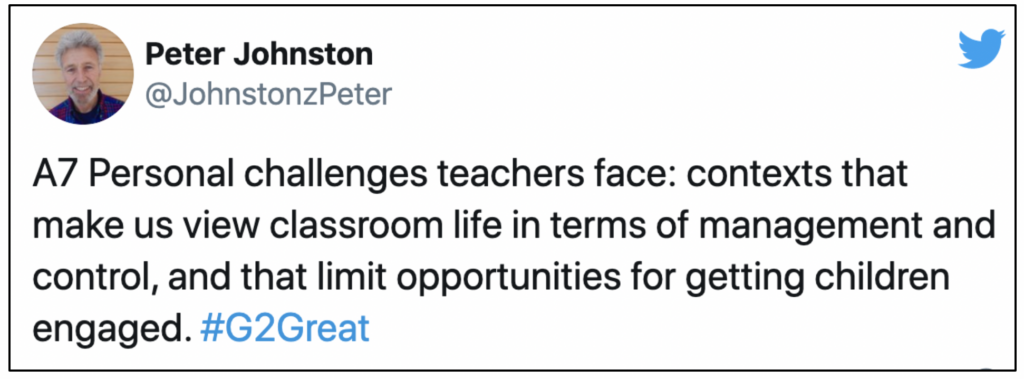

In our opening quote, letting go of “old habits and beliefs” is a precursor to the transformative change process we are invited to embark upon. Peter highlights that letting go of managing and control frees us to create rather than limit the engaging opportunities that will keep students at the center of the learning process. Kathy asks us to reconsider a day filled with teacher talk so that we can trust the impact when student voices fill the learning air and inform our thinking as they engage in opportunities to learn together.
#2: Embrace Professional Learning


While Peter’s tweet was actually focused on letting go, it’s also a reminder that taking responsibility for our professional learning is essential to the change process. The teacher vignettes in this book are a perfect example since they were the result of long-time professional learning and support. Kathy reminds us to find professional co-conspirators who value their own learning and will read, study, initiate, learn and grow side by side with us as we multiply and enrich our shared growth process.
#3: Embrace Intentional Decision Making
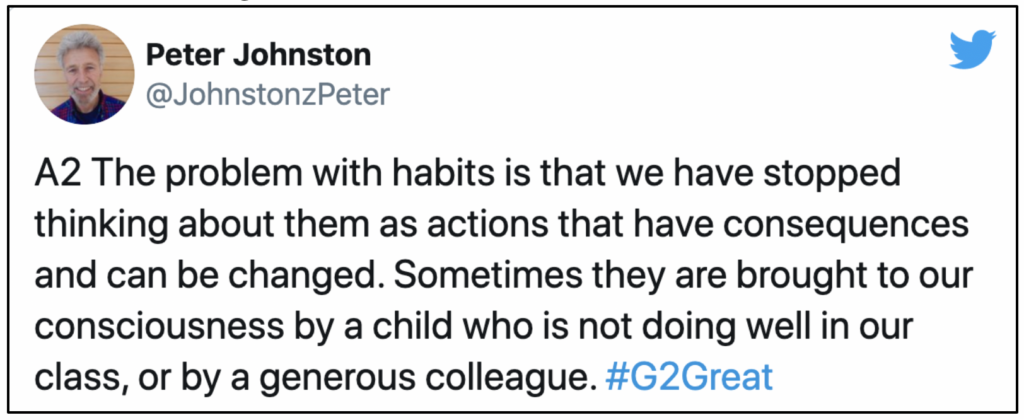
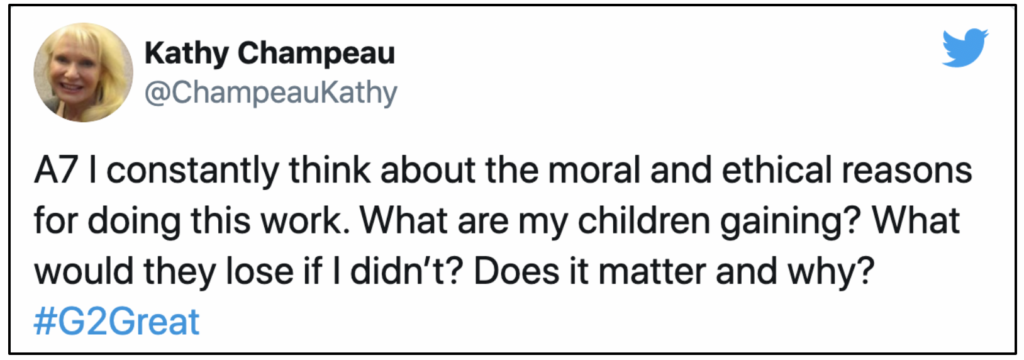
Peter is asking us to examine our habits by paying attention to children who beckon us to make student centered instructional choices on their behalf. This requires us to be curious kidwatchers who use what we notice as a reflective mirror to change. Kathy adds to this kidwatching mindset by asking us to turn our thinking inward as we use this to envision day-to-day decision-making from the eyes of our learners.
#4: Embrace Shared Responsibility
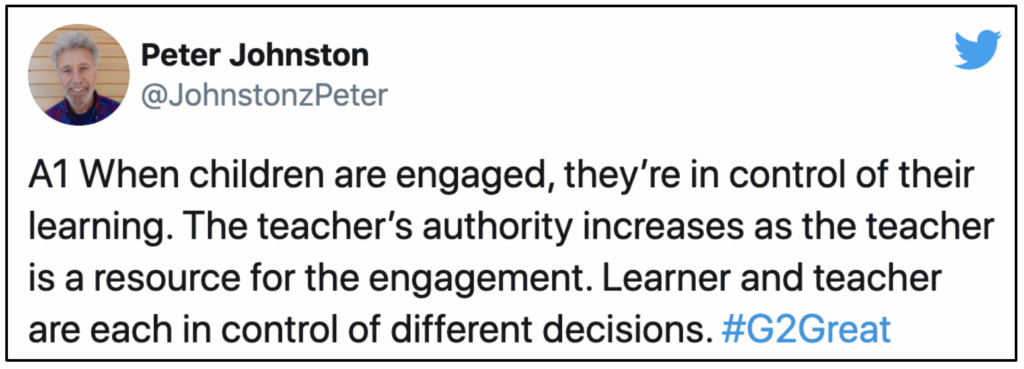

Peter reminds us of the impact of engagement when we are willing to begin to transfer responsibility to students. Giving students increasing control allows us to support their efforts and become a “resource for engagement.” Kathy highlights this sharing of responsibility so that children experience greater autonomy. This is not a one-time lesson but a constant process of sharing that role while also ensuring that students are taking responsibility for their growth as learners.
#5: Embrace Noticing and Extending
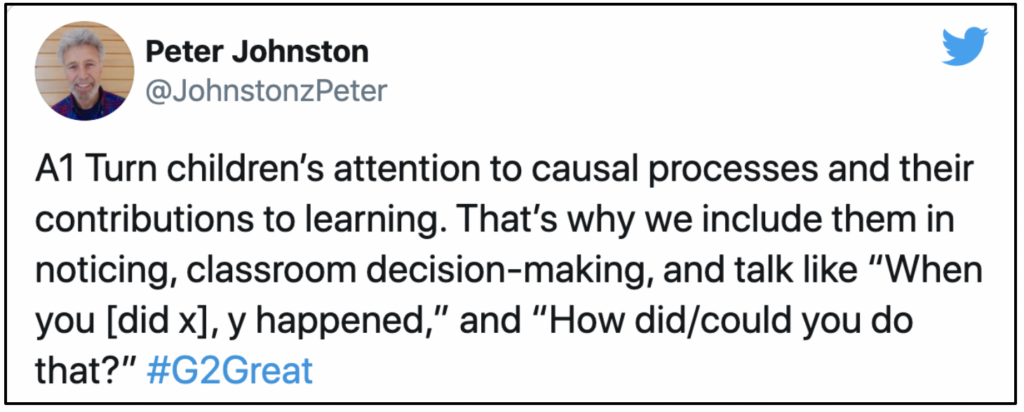

A central feature of Engaging Literate Minds is teachers as ‘noticers’ of student learning. Peter asks us to in turn help students become noticers of their own learning and use those noticings as a rich source of collaborative conversations that help students to become more learner aware. Kathy reminds us that noticing must also be followed by naming so that students will be privy to what we notice and can thus replicate and extend this in the future. It is this extending that is most likely to lead to transfer.
#6: Embrace Collective Engagement

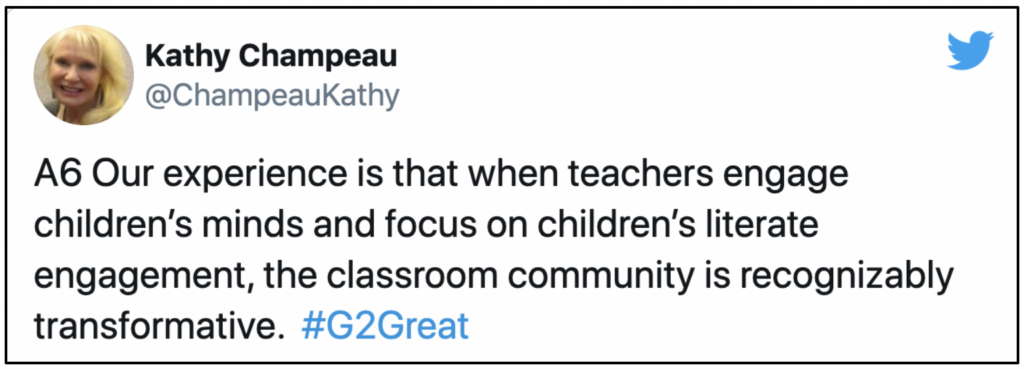
I use ‘collective engagement’ intentionally as we embrace the essential collaborations that can maximize learning. Peter draws our attention to opportunities to value each member of the collective experience and avoid questions and tasks that limit their learning. Kathy’s use of “transformative” describes collective engagement within meaningful and authentic active literacy experiences. This transformational process focuses our sights on creating a culture of collective engagement rather than merely what we add into the schedule.
#7: Embrace Celebrating Literate Minds
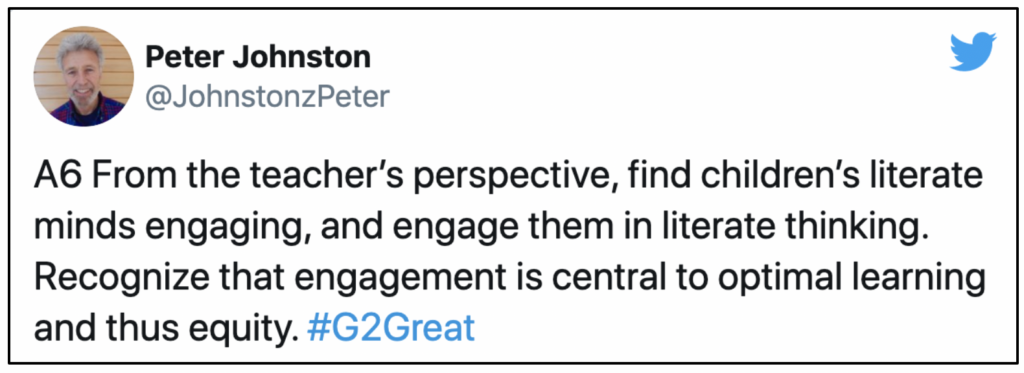

And so we come full circle to the Literate Minds we are Engaging across the year on a daily basis. Peter reminds us that viewing children in this spirit can lead us to translating engaging literate minds into action when we make engagement and equity a priority. Kathy emphasizes engagement through experiences that will nurture student curiosity. Curiosity is the spark for engaging literate minds and it is our curiosity about children as learners and humans that keeps curiosity alive across the entire year.
As we come to the end of this post, I’d like to leave you with a “from the heart” message in the words of Peter Johnston and Kathy Champeau with our third question:
What is a message from the heart you would like for every teacher to keep in mind?
Peter Johnston
The value and complexities of teaching are generally underestimated by the public at large. It is hard work with big responsibilities and constant problems to solve. But it can be joyful, exciting work, with ample opportunities for learning and surprise. Although we show some wonderful classroom interactions in the book, and how to work towards them, they did not start that way and are not always that way. We did not include many examples that fell short of our hopes, but not because they didn’t happen. You will have them too. They are approximations and opportunities to learn. In our experience, accumulating professional knowledge takes time, colleagues, collaborative persistence and problem-solving, a tolerance for approximation, and a long-term commitment.
Kathy Champeau
We teachers matter. Teacher’s work is critical to who our students become, who we become, and what our world becomes. Teach with a sense of urgency. By constantly contemplating this question, “Who will my students become at the end of a year with me?” creates a sense of urgency for the work we do and the daily decisions we make. Realizing the power that we have in the lives of our students we serve can be daunting, if we think about it; however, we need to embrace that head-on. So, seek out professional mentors and experts who think with you and not for you. I believe that thinking teachers and thinking students, and teachers thinking with students, can change our classrooms, schools, communities and the world, for the better. Embrace the joyful. We have the power, let’s use it wisely.
MY CLOSING THOUGHTS
In their final question as well as across their book and in their tweets, Peter and Kathy remind us that teaching is joyful, exciting work and that each of us have the power to ensure that joy accompanies change for teachers and for children. Since I believe deeply that joyful learning can be infused into each moment of our day when we believe in engaging literate minds, I offer a final step in honor of this critical feature.
BONUS STEP: Embrace Joy
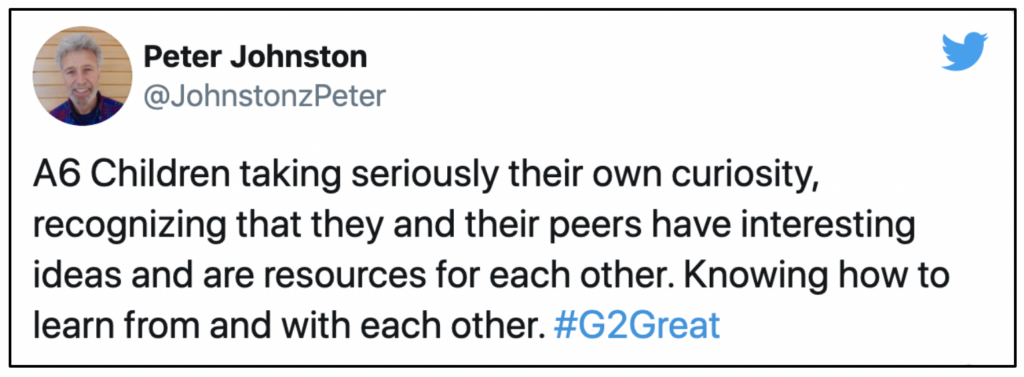
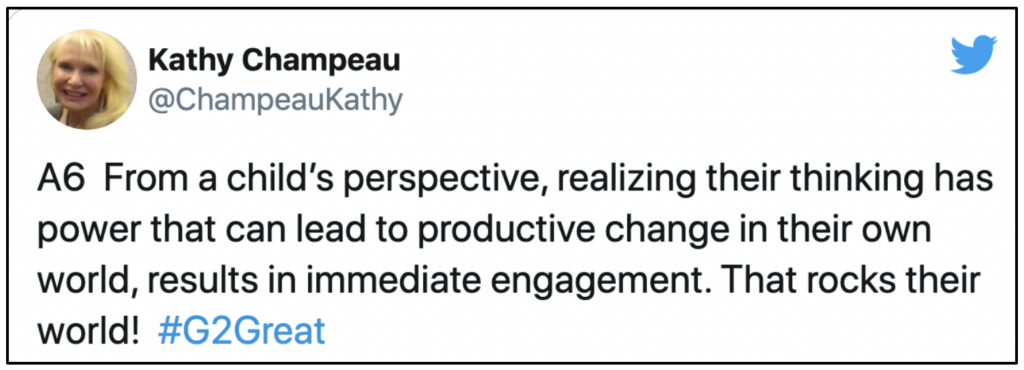
Peter’s words bring joyful learning and teaching into full view as we value student curiosity and the thinking their curiosity can awaken. Joy happens when we step back and become admirers of literate minds as children actively engage in peer supported learning and thinking. Kathy describes this joyful learning and thinking as a process that heightens engagement in ways that will “rock their world.” What could be more joyful than that?
If you are taking time to read this post, then you value your own learning. Knowing the challenge and delight of transformative change, then you also know that you do not have to do this work alone. Our colleagues and the clear descriptions of the teaching/learning process in Engaging Literate Minds offer a change roadmap in technicolor view. It is my hope that their words of wisdom and these seven steps inspired by Peter Johnston and Kathy Champeau will support those changes that have the greatest potential to transform the day to day decisions you make tin the name of children. In the end, this important work must take place when we make a commitment to engage literate minds where these changes will matter most – in the company of the children we honor with renewed perspective.
On behalf of my #G2Great co-moderators and our incredible chat family, we would like to extend deep gratitude to Peter Johnston, Kathy Champeau and the generous teachers who invited us into their classrooms. As I close, I can envision their professional gift in the hands of educators’ everywhere.
And that brings me great joy!
And so I give Peter Johnston and Kathy Champeau the final words.
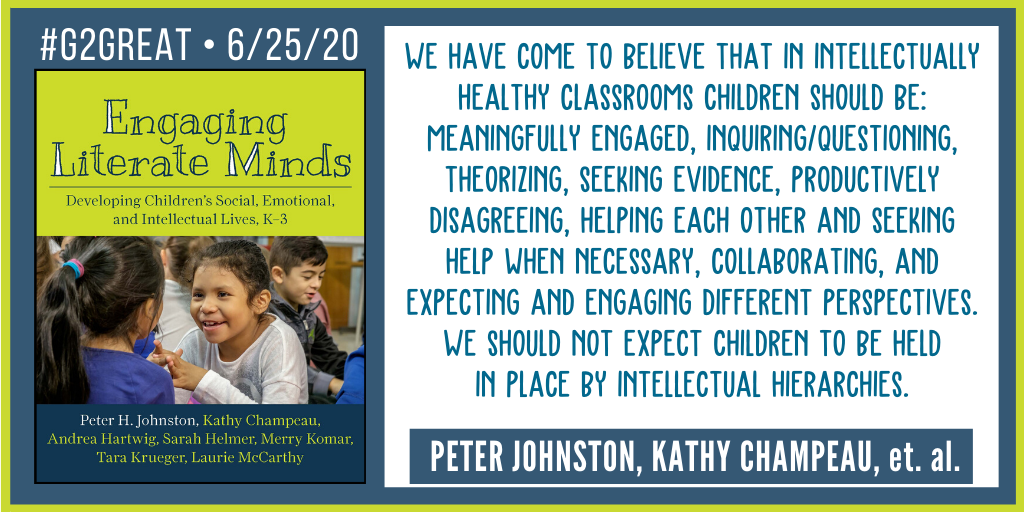
To continue your Engaging Literate Minds change journey, join principal Matt Renwick’s book study. Use this link to see the posting schedule and sign up or you can join the conversation using the hashtag #engaginglitminds on Twitter.
More inspired tweets from Peter Johnston and Kathy Champeau
